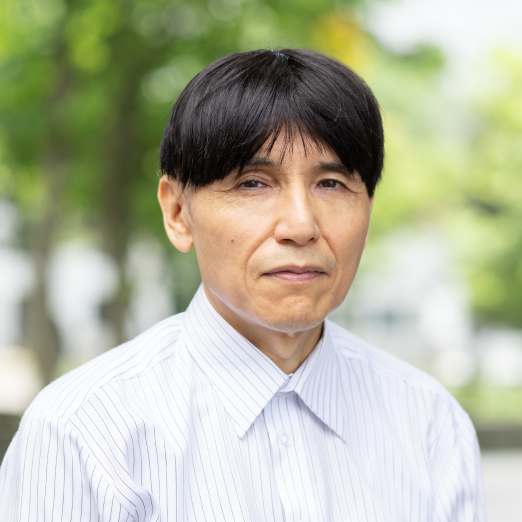
辻川 信二 教授
Shinji Tsujikawa
専門分野
宇宙物理学・相対性理論
相対性理論とその拡張理論を用いて宇宙の謎に迫る
研究テーマ
宇宙進化 / 強重力天体
キーワード
インフレーション / 宇宙論的摂動 / 重力波 / ダークエネルギー / ダークマター / ブラックホール / 中性子星
LINKS
RESEARCH OVERVIEW
研究概要
21世紀以降の宇宙の観測技術の進歩に伴い,宇宙論・相対論の研究は急速な発展をしてきました. 特に,
- 量子重力理論,弦理論に基づく宇宙初期の進化
- インフレーションと再加熱の物理
- 宇宙背景輻射(CMB)と宇宙の大規模構造の起源となる,原始密度揺らぎの進化
- 宇宙の大規模構造の進化とダークマター
- 宇宙の後期加速膨張とダークエネルギー
- 一般相対論の拡張に基づく重力理論
- ブラックホール・中性子星のような強重力天体と,それらを起源とする重力波
などの宇宙物理学の理論研究が,観測から検証可能な時代に入っています.
本研究室では, 理論的に有効な宇宙論の模型の構築と, 観測データからの模型への制限の研究を主に行なっています.特に,CMB の温度揺らぎなどの最新の観測データからインフレーションのような宇宙初期の物理現象の検証を行うことや,現在の宇宙の全エネルギーの7割近くを占めるダークエネルギーの起源の理論的な探究と, 超新星やCMBなどの観測からの制限を調べています. 特に,インフレーションとダークエネルギーという宇宙初期と後期の 2 つの加速膨張の起源は未だに解明されておらず, 2015 年に初めて検出された重力波やその他の多様な観測データを用いて,これらの起源に迫ることを目標にしています.
MESSAGE to STUDENTS
学生へのメッセージ
観測技術の進歩により,21世紀に入って宇宙論は精密科学の領域へと発展し、宇宙初期から現在に至るまでの宇宙の進化の詳細が明らかになってきました.一方で,インフレーションやダークエネルギー,ダークマターの起源など,いまだ解明されていない課題も残されており,理論と観測の両面から世界的に活発な研究が進められています.こうした宇宙の謎に挑みたいという意欲ある学生を歓迎します.
学歴・経歴
1996年 – 1998年 早稲田大学大学院 理工学研究科 物理学及応用物理学専攻 修士課程
1998年 – 2001年 早稲田大学大学院 理工学研究科 物理学及応用物理学専攻 博士後期課程
2001年 – 2004年 東京大学 理学系研究科 日本学術振興会特別研究員PD
2004年 – 2008年 群馬工業高等専門学校 講師
2008年 – 2015年 東京理科大学理学部第二部物理学科 准教授
2015年 – 2020年 東京理科大学理学部第二部物理学科 教授
2020年 – 現在 早稲田大学 先進理工学部 物理学科 教授
所属学協会
- 日本物理学会

Shinji Tsujikawa
Professor
Field of study
Cosmology and general relativity
Probing the mysteries of the universe through the theory of relativity and its extensions
Research Themes
Cosmic expansion history / compact objects
Keywords
Inflation / Cosmological perturbations / Gravitational waves / Dark energy / Dark matter / Black holes / Neutron stars
LINKS
RESEARCH OVERVIEW
Since the beginning of the 21st century, rapid advancements in observational technology have significantly accelerated research in cosmology and general relativity. In particular, remarkable progress has been made in the following areas:
- The evolution of the early universe based on quantum gravity and string theory
- The physics of inflation and reheating
- The evolution of primordial density perturbations responsible for the cosmic microwave background (CMB) and the large-scale structure of the universe
- The evolution of large-scale structures and the role of dark matter
- Late-time cosmic acceleration and dark energy
- Extended theories of gravity
- Strong gravity astrophysical objects such as black holes and neutron stars, and gravitational waves
These areas of theoretical astrophysics have now entered an era in which their predictions can be directly tested against observations. In our laboratory, we mainly focus on constructing theoretically consistent cosmological models and constraining them using observational data. In particular, we test early universe physics, such as inflation, using the latest observational data including CMB temperature fluctuations. We also investigate the theoretical origin of dark energy—which accounts for nearly 70% of the total energy density of the current universe—and study the observational constraints from supernovae, the CMB, and other data. By utilizing gravitational waves first detected in 2015, along with a wide range of other observational data, we aim to uncover the nature of two phases of cosmic accelerated expansion—inflation in the early universe and dark energy in the late universe.
MESSAGE to STUDENTS
With advances in observational technology, cosmology has developed into a precision science in the 21st century, and details of the universe’s evolution—from its earliest stages to the present—have been steadily revealed. At the same time, fundamental questions remain unanswered, such as the origins of inflation, dark energy, and dark matter, and active research is being conducted worldwide from both theoretical and observational perspectives. We welcome motivated students who wish to take on these mysteries of the universe.
Education and Career
1996 – 1998 M.Sc. program in Physics and Applied Physics, Graduate School of Science and Engineering, Waseda University
1998 – 2001 Ph.D. program in Physics and Applied Physics, Graduate School of Science and Engineering, Waseda University
2001 – 2004 JSPS Postdoctoral Fellow (PD), Graduate School of Science, The University of Tokyo
2004 – 2008 Lecturer, Gunma National College of Technology
2008 – 2015 Associate Professor, Department of Physics, Faculty of Science Division II, Tokyo University of Science
2015 – 2020 Professor, Department of Physics, Faculty of Science Division II, Tokyo University of Science
2020 – present Professor, Department of Physics, Faculty of Advanced Science and Engineering, Waseda University
Professional Memberships
- The Physical Society of Japan
